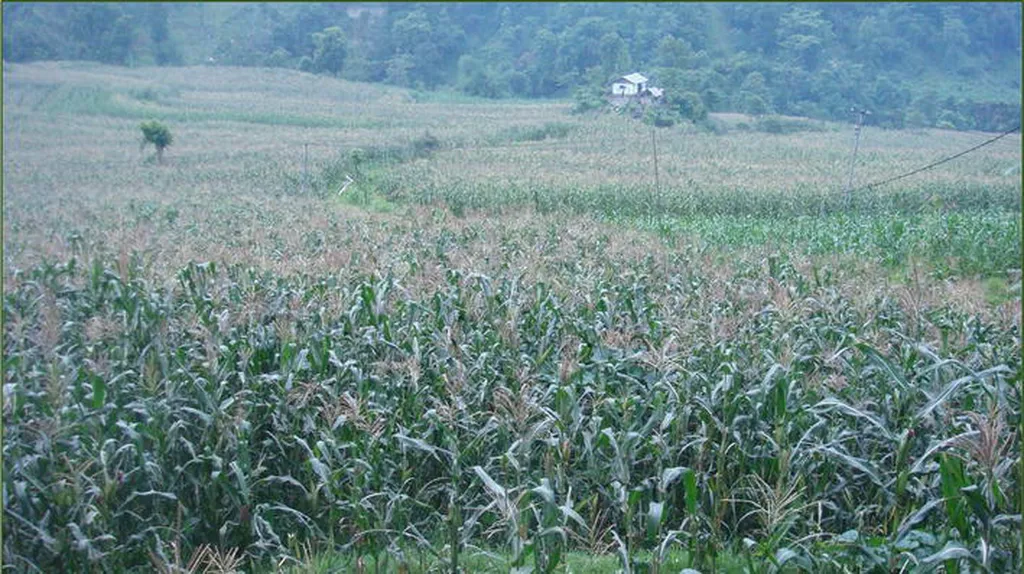In the undulating landscapes of Sikkim, where terraced fields paint a picture of resilience and tradition, a quiet revolution is taking place. Researchers, led by AYUSH from the College of Agricultural Engineering and Post-Harvest Technology at Central Agricultural University in Imphal, Manipur, are redefining how farmers protect their crops. Their focus? The humble maize plant, and a novel approach to intra-canopy spraying that could reshape farming practices in the Northeast Himalayan (NEH) region and beyond.
The challenge is clear: traditional sprayers often struggle to deliver pesticides and fertilizers effectively within the dense canopy of maize crops, leading to wasted resources and suboptimal plant protection. AYUSH and his team set out to address this issue, conducting a series of experiments from 2022 to 2024. Their goal was to optimize the discharge rate, swath width, spray angle, and coefficient of variation (CV) of different nozzles at varying pressures and heights.
“We wanted to find the sweet spot where the spray is most effective and efficient,” AYUSH explained. After rigorous testing, they selected a flat fan nozzle with the lowest CV of 30.26% at an operating pressure of 150 kPa and a nozzle height of 400 mm. This nozzle was then integrated into a vertical boom sprayer, designed specifically for intra-canopy application.
The team’s innovations didn’t stop there. They developed a small, lightweight, manually guided power sprayer tailored for maize crops. Field trials revealed impressive results: good deposition both above and below the leaves, with 70.81 and 58.66 deposits/cm², respectively. The volume deposition was equally promising, at 70.35 and 58.14 µL/cm² for above and under leaf surfaces.
The practical implications are significant. The sprayer boasts a field capacity of 0.11 hectares per hour and a field efficiency of 73.33%. With a cost of ₹22,600, the sprayer offers a benefit-cost ratio of 1.56 and a payback period of just 1.7 years. “This technology is a game-changer for small farmers in the NEH region,” AYUSH asserted. “It’s cost-effective, efficient, and tailored to the unique challenges of terrace farming.”
The research, published in ‘The Indian Journal of Agricultural Sciences’ (translated as ‘भारतीय कृषि विज्ञान पत्रिका’), highlights the potential for precision agriculture to enhance productivity and sustainability. As the world grapples with the need to feed a growing population while minimizing environmental impact, innovations like this vertical boom sprayer offer a beacon of hope.
The implications extend beyond maize and the NEH region. The principles of intra-canopy spraying and the optimization of spray characteristics can be applied to various crops and farming conditions. This research could inspire further developments in agritech, fostering a new era of efficient, targeted, and sustainable plant protection.
In the terraced fields of Sikkim, a small sprayer is making a big difference. And as AYUSH and his team continue to refine their technology, the ripples of their work are set to spread far and wide, shaping the future of agriculture.

